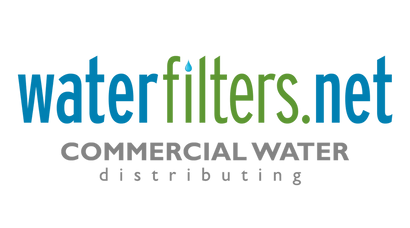Whole House Systems
Drinking Water Systems
Replacement Filters
As part of a natural chemical process in the body, nitrate is reduced to nitrite. The EPA has determined the MCL (Maximum Contaminant Level) for nitrate at 10 ppm.
Nitrate (NO3) is a molecule composed of nitrogen and oxygen. These elements, independently, are not regarded as contaminants, but in combination, under certain circumstances, they can be a problem.
Nitrate develops when nitrogen merges with oxygenated water. In most situations where this happens, it's related to plant growth, and nitrate is found in many vegetables. We consume nitrates, then, without any adverse effects and without concern. It's not harmful in that situation. But nitrates in our drinking water can contaminate water, another matter altogether.
Nitrates can enter our water system through runoff; fertilizer and animal wastes, if leached into the water supply, can lead to undesirably high levels of nitrates in water. The health effects of elevated nitrate levels are most evident in infants, who can develop a medical problem called methemoglobinemia, a lack of oxygen in the blood. This can lead to coma, and can be fatal, though the condition is treatable if taken care of immediately. Nursing mothers who consume water with elevated nitrate levels can find that their breast milk is affected, which is a concern though no cases of methemoglobinemia have been attributed to an infant's consumption of breast milk with high nitrate levels. Fetuses and newborn children are particularly sensitive to nitrates and nitrites. High levels may result in a dangerous condition known as "Blue Baby Syndrome." Adults with heart or lung problems may suffer ill effects from nitrates, and there are scientists whose research indicates a connection between very high nitrate levels in water and certain cancer risks. The recommended treatment process for nitrites is Reverse Osmosis or Distillation.
Nitrate (NO3) is a molecule composed of nitrogen and oxygen. These elements, independently, are not regarded as contaminants, but in combination, under certain circumstances, they can be a problem.
Nitrate develops when nitrogen merges with oxygenated water. In most situations where this happens, it's related to plant growth, and nitrate is found in many vegetables. We consume nitrates, then, without any adverse effects and without concern. It's not harmful in that situation. But nitrates in our drinking water can contaminate water, another matter altogether.
Nitrates can enter our water system through runoff; fertilizer and animal wastes, if leached into the water supply, can lead to undesirably high levels of nitrates in water. The health effects of elevated nitrate levels are most evident in infants, who can develop a medical problem called methemoglobinemia, a lack of oxygen in the blood. This can lead to coma, and can be fatal, though the condition is treatable if taken care of immediately. Nursing mothers who consume water with elevated nitrate levels can find that their breast milk is affected, which is a concern though no cases of methemoglobinemia have been attributed to an infant's consumption of breast milk with high nitrate levels. Fetuses and newborn children are particularly sensitive to nitrates and nitrites. High levels may result in a dangerous condition known as "Blue Baby Syndrome." Adults with heart or lung problems may suffer ill effects from nitrates, and there are scientists whose research indicates a connection between very high nitrate levels in water and certain cancer risks. The recommended treatment process for nitrites is Reverse Osmosis or Distillation.
No products found in this collection
{"statementLink":"","footerHtml":"","hideMobile":false,"hideTrigger":false,"disableBgProcess":false,"language":"en","position":"left","leadColor":"#146ff8","triggerColor":"#146ff8","triggerRadius":"50%","triggerPositionX":"left","triggerPositionY":"bottom","triggerIcon":"people","triggerSize":"medium","triggerOffsetX":20,"triggerOffsetY":20,"mobile":{"triggerSize":"small","triggerPositionX":"left","triggerPositionY":"bottom","triggerOffsetX":10,"triggerOffsetY":10,"triggerRadius":"50%"}}
